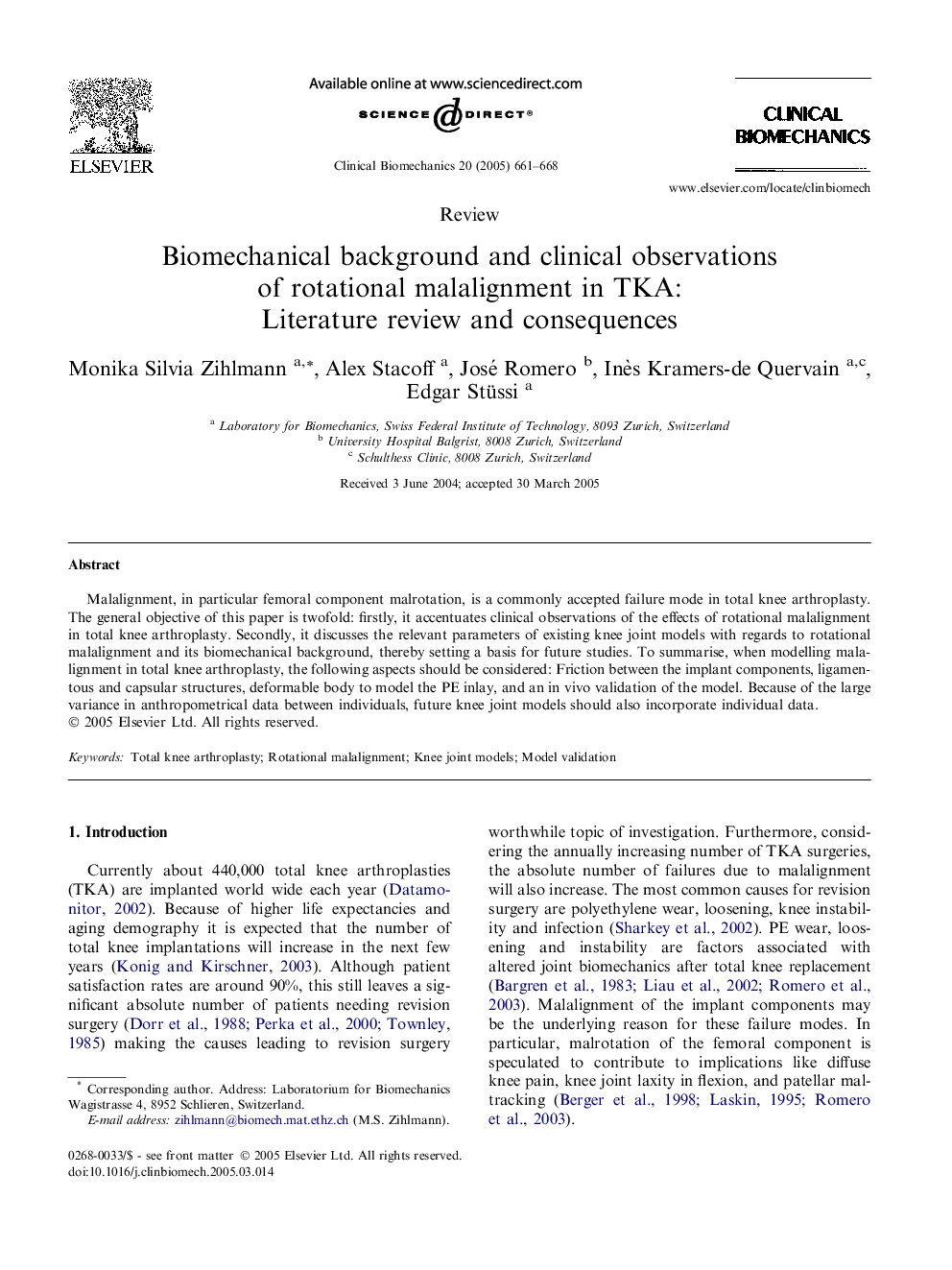| Article ID | Journal | Published Year | Pages | File Type |
|---|---|---|---|---|
| 9350442 | Clinical Biomechanics | 2005 | 8 Pages |
Abstract
Malalignment, in particular femoral component malrotation, is a commonly accepted failure mode in total knee arthroplasty. The general objective of this paper is twofold: firstly, it accentuates clinical observations of the effects of rotational malalignment in total knee arthroplasty. Secondly, it discusses the relevant parameters of existing knee joint models with regards to rotational malalignment and its biomechanical background, thereby setting a basis for future studies. To summarise, when modelling malalignment in total knee arthroplasty, the following aspects should be considered: Friction between the implant components, ligamentous and capsular structures, deformable body to model the PE inlay, and an in vivo validation of the model. Because of the large variance in anthropometrical data between individuals, future knee joint models should also incorporate individual data.
Related Topics
Health Sciences
Medicine and Dentistry
Orthopedics, Sports Medicine and Rehabilitation
Authors
Monika Silvia Zihlmann, Alex Stacoff, José Romero, Inès Kramers-de Quervain, Edgar Stüssi,
